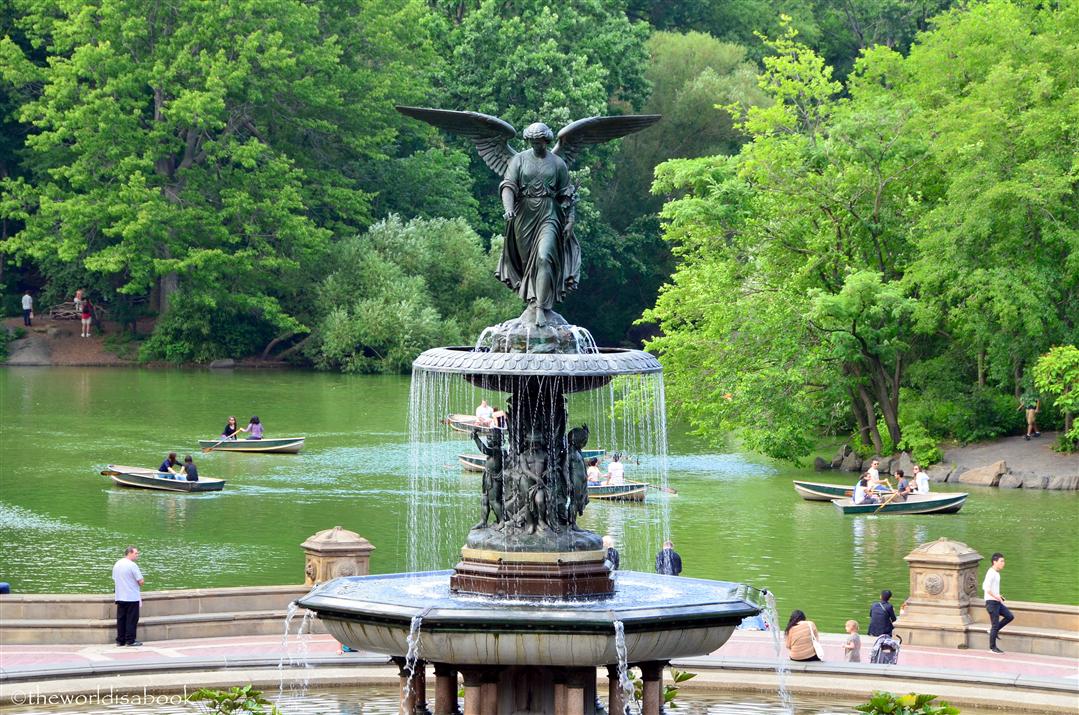Walking around Central Park in New York is like taking a stroll through history. Located in the heart of Manhattan, Central Park is the most visited urban park in the United States. It is a destination for locals and tourists alike, who come to enjoy its many attractions. From sculptures and monuments to fountains and bridges, Central Park is home to some of the most iconic sites in the city. This blog post will explore the rich history of Central Park and provide an overview of some of the park’s most popular attractions.

The Early Days
Walking around Central Park today, you’d never know that the land was once an area of swampland and rocky hills known as the Manor of Seneca. In 1853, the state legislature authorized the City of New York to acquire this land to create a public park. It was designed by two well-known architects, Frederick Law Olmsted and Calvert Vaux. Their vision was to create a pastoral landscape with winding paths and large meadows for recreational use.
The first construction began in 1857 and continued until the early 1870s. During this time, many structures were erected, including bridges, pathways, and buildings such as the Dairy, the Boathouse, and the Umpire Rock Shelter. Olmsted and Vaux also planted more than two million trees and shrubs to create a natural landscape. Additionally, numerous lakes, ponds, and streams were created to provide recreational activities like boating and fishing. As a result of all this hard work, Central Park quickly became a popular destination for New Yorkers.

The Civil War Years
The Civil War had a profound effect on Central Park, as the city of New York had become increasingly divided over the issue of slavery. During this time, the Park became a gathering place for many soldiers to meet up and discuss strategy and tactics, as well as a place for the public to show their support for the Union troops.
Although some areas were used for military drills and encampments, much of the park remained open for visitors to enjoy. Walking around Central Park during the Civil War years was still a popular activity, despite the war efforts. People could still find relaxation in the park, and its beauty continued to be admired. It was also used as a gathering place to talk politics and stay informed on current events.
The impact of the war on Central Park was made evident in the following years. As the city recovered from the conflict, much of the Park’s infrastructure had been damaged and needed to be replaced. In addition, many of the trees had been chopped down to provide firewood for the soldiers. These changes would shape Central Park’s future and help to make it one of New York City’s greatest landmarks.

The Gilded Age
The Gilded Age was an era of American history marked by great wealth, rapid industrialization, and growing urban populations. During this time, Central Park became a playground for the wealthy elite of New York City. The construction of bridges, fountains, sculptures, and ornate landscaping provided a leisurely atmosphere for those who wanted to escape the hustle and bustle of city life. Walking around Central Park during this period would reveal grandiose architecture, well-manicured gardens, and some of the most luxurious private properties in the country.
Grand Central Station was opened in 1871, and its grandeur rivaled that of Central Park itself. Wealthy New Yorkers could now escape to the countryside in style, and they did just that. Private railcars would bring their owners and their guests to the park on weekends, providing them with a place to relax, entertain, and enjoy a change of scenery.
The opening of the Metropolitan Museum of Art in 1870 added even more cultural refinement to the atmosphere of Central Park. Within its walls, some of the most notable works of art from around the world could be seen. And with the emergence of nearby 5th Avenue stores such as Tiffany & Co., Bergdorf Goodman, and B. Altman & Co., the area became even more desirable for those looking for luxury goods and services.
During the Gilded Age, Central Park was transformed into an oasis for the rich and famous. It remains so today, but it’s also open to all who wish to explore its grounds and take in its unique history.
The Great Depression and World War II
When the Great Depression hit in 1929, the impact of the economic crisis was felt everywhere, including Central Park. The park had already gone through several tough years before the crash, with a significant drop in attendance. This decline was only exacerbated when the stock market crashed and New Yorkers were unable to afford to take a stroll around Central Park.
Though some parts of the park remained open, a large portion was fenced off and off-limits to the public, while others were filled with makeshift shantytowns. During this time, Central Park served as an emergency shelter for those without housing or employment.
At the outbreak of World War II in 1941, many of the park’s features became dedicated to patriotic efforts. Summerhouses became air raid shelters, lawns were planted with “Victory Gardens,” and concerts and rallies took place in the Mall. The war brought a renewed sense of patriotism and unity to New Yorkers, many of whom gathered at Central Park for walking around and picnic.
In the post-war years, Central Park recovered from the effects of the Great Depression and World War II, becoming an increasingly popular attraction for tourists and locals alike. New attractions such as ice skating rinks, tennis courts, and playgrounds were added, transforming Central Park into one of America’s most iconic urban parks.

The Post-War Years
The post-war years saw the park become even more of an escape for residents of New York City. After a period of decline in the early 1950s, restoration efforts were put into effect to bring the park back to its former glory. Millions of dollars were invested in improvements to the park, and many new attractions and activities were added. Today, Central Park is one of the most popular parks in the country.
People from all walks of life come to the park to enjoy its 843 acres of lush greenery and tranquil lakes. Whether it’s for a stroll or a bike ride around the reservoir, walking around Central Park is a great way to spend a day. The pathways wind around the lakes and through picturesque meadows, offering stunning views of the city skyline. The park also hosts concerts, festivals, and other events throughout the year. In addition, there are plenty of spots to relax and take in the beauty of nature with a picnic lunch.
Central Park is also home to several historical monuments, including statues of historic figures such as Robert Burns and Alexander Hamilton. These monuments remind visitors of the long history of Central Park and New York City. Whether you’re visiting for a day or just strolling around Central Park, you’ll find plenty of things to do and see.

The Central Park of Today
Walking around Central Park today, you will find it full of life and activity. Visitors of all ages can find something to enjoy, from rowing boats on the lake to strolling along miles of pathways to picnicking in the meadows. During the spring and summer, vibrant flowers add even more color and beauty to the grounds.
For art lovers, there are several sculptures and statues located throughout Central Park. There is also a plethora of music and theatrical performances, often taking place in the park’s outdoor amphitheater, Bethesda Terrace. The park also hosts numerous seasonal events for the public to attend, such as the Summerstage Music Festival and the Great Jack O’Lantern Blaze.
The park is also home to a wide variety of wildlife, from red-tailed hawks to raccoons, ducks, and even coyotes. For birdwatchers, Central Park is a great destination, with over 250 different species recorded within its boundaries.
Central Park is an iconic destination for anyone looking to spend some time outdoors or take in a bit of history. It’s a great place to explore, relax, and take in the beauty of New York City.




